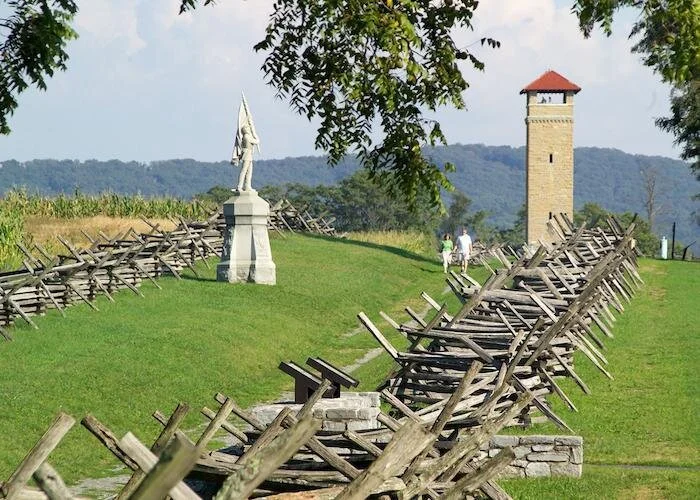MIDDLEBURG, Virginia — Land Trust of Virginia (LTV) in conjunction with the Shenandoah Valley Battlefields Foundation (SVBF), who co-holds the conservation easement with LTV, are pleased to announce that John Stevenson and Amber Bromley have permanently protected their 422-acre farm. When looking for ways to ensure that the expensive scenic views and significant history of their land would be here not only for their young son, but for future generations, Stevenson and Bromley concluded that the best and only way to accomplish this goal was by entering into a protective conservation easement agreement.
“Everyone in the community benefits from open space and the preservation of the history of this property,” said Stevenson, “My hope is that this inspires others in the valley to put their properties into easement.”
The Stevenson-Bromley farm is located just 2 miles southwest of the village of Strasburg in Shenandoah County, Virginia, known for its grass roots arts culture and rich history. Located on the eastern-facing slopes of Little North Mountain, the property has expansive ridgeline views and is highly visible from several public roads, including 1-81, and Virginia Byways – State Routes 623, 55 and US 11. With this easement, the scenic integrity of this area will now be preserved and continue to be enjoyed by the public. In addition, a portion of the ridgeline boundary is adjacent to Devil’s Backbone State Forest, a 705.5-acre property maintained by the Virginia Department of Forestry to conduct research, support biological diversity, and allow outdoor recreation. Creating large swaths of connected, conserved habitat is of amazing benefit to the local wildlife.
Union soldier Isaac N. Hendrickson, who lost his left eye to a shell fragment during the attack across the property during the Battle of Fisher’s Hill
The conservation agreement with Stevenson and Bromley will also protect the farm’s significant historic resources by maintaining its historic landscape and structures. Regarding the Civil War context of the property, as explained by Keven Walker, chief executive officer of SVBF, “This property is an extremely important part of the Fisher’s Hill Battlefield. It’s the site where the Army of West Virginia, under the command of Union General George Crook, arrived after their secretive flank march and from where they launched an attack that would crush the confederate left and win the battle for the Union. This property, this hallowed ground is a critical contributor to the rural, historic landscape of the Shenandoah Valley and to the history of our nation.”
Due to SVBF’s expertise, they have agreed to watch over the preservation of the property’s historic values while LTV will watch over the property’s open space and natural resource values.
Walker added, “SVBF’s membership in particular responded with an amazing gift that helped this young family with most of the costs of the easement donation, which was a critical component of getting this property protected.” LTV’s Deborah Whittier Fitts Battlefield Stewardship Fund also assisted in covering some of the costs.
Sally Price, Executive Director of LTV, comments, “Community partnerships with organizations like SVBF, caring supporters and passionate landowners like John and Amber, are why conservation can be a solution, protecting the character and history of the Shenandoah Valley of Virginia.”
The Stevenson–Bromley Easement is the 206th conservation easement recorded by the Land Trust of Virginia. For more information about their work, please visit http://www.landtrustva.org.












